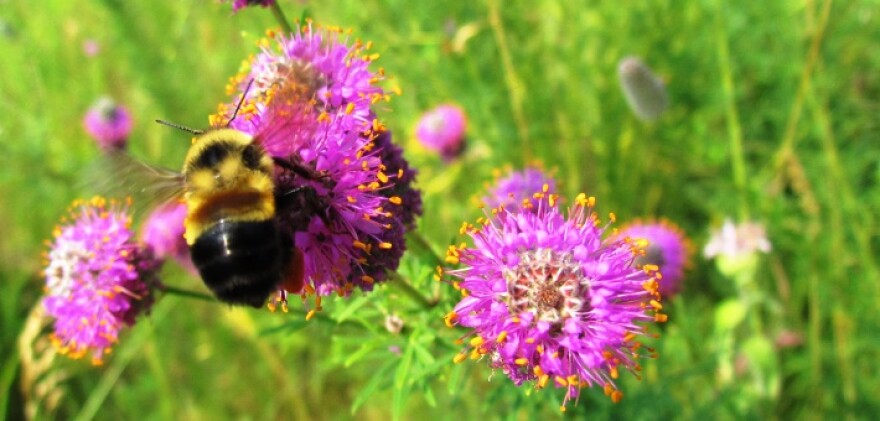An executive order from the Trump administration has frozen the process that, for the first time, would have given a bee species federal protection.
The rusty-patched bumblebee would have been officially listed under the Endangered Species Act today. But, according to a notice from the Office of the Federal Register, the temporary freeze has delayed the effective date until March 21.
The decision was met with disappointment in St. Louis, where some scientists have been working to raise public awareness of native bee species, which have been declining on a global level. The number of rusty-patched bumblebees, once common in the Midwest and the eastern United States, has declined 87 percent since the late 1990s.
Wild native bees have strong economic value in agriculture, because they pollinate crops. Many of those species pollinate better than honeybees.
The U.S. Fish and Wildlife Service announced in January that that it would declare the species endangered, during President Barack Obama's final days in office.
"It makes sense that with the change in administration that the new administration would want to look at the policies that have been passed in that interim space," said Damon Hall, a conservation scientist at Saint Louis University. "But of course for this species, the concern is we need to move forward on developing recovery plans so we can figure out what can be done to conserve the rusty-patched bumblebee."
The decision to give federal protection to the species was hardly made last minute. Like other species listed under the Endangered Species Act, the rusty-patched bumblebee was subject to lengthy public comment and regulatory review periods.
"This species has been under review for a very long time," said Edward Spevak, the St. Louis Zoo's expert on pollinators. "And the decision was made that it should be listed. That decision, with previous comments, the research, I think should be maintained."
Spevak added that he hoped the review of the bee's listing will focus only on scientific research and not other political factors that may be involved. Much work has been started by conservationists to protect native bees on a local and regional level, but federal protection is key to providing the necessary funds for further research and engaging the public on a national level.
"Sometimes if you don't have that listing, people say, 'Uh well, I don't have to do anything,'" Spevak said. "Well no, when you actually say this species is endangered, it sometimes brings people who wouldn't think about it to the table to say, 'We need to help, also.'"
Follow Eli on Twitter: @StoriesByEli




